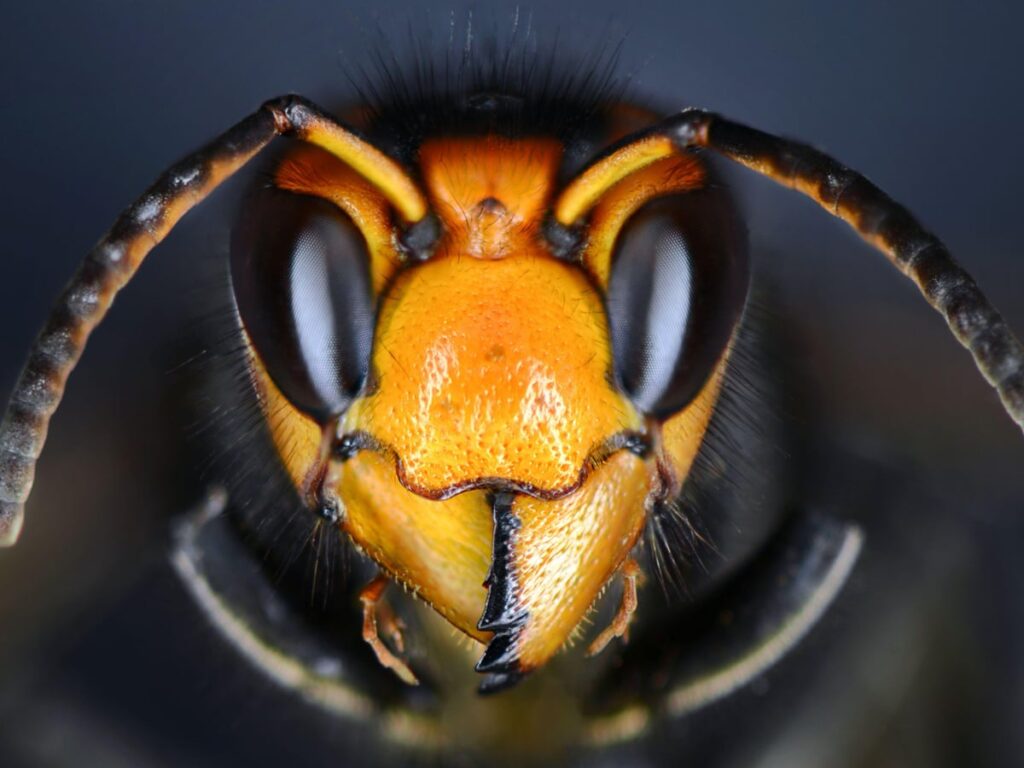
Having problems with asian hornets?
As of 25th July 2025, there have been 73 confirmed sightings of the yellow-legged hornet across England, with 28 nests discovered and dealt with. These figures highlight the growing presence of this invasive species, which poses a significant threat to native pollinators and ecosystems. Vigilance and early reporting remain essential.
Asian Hornet Identification and Control
The Asian hornet (Vespa velutina), also known as the yellow-legged hornet or Asian predatory wasp, is an invasive species that originated in East Asia. It is not native to the UK and did not arrive through natural migration. Despite this, people have recorded confirmed sightings in parts of the UK.
Why Asian Hornets Are a Concern
The primary concern with Asian hornets is their predation on bees and other pollinators. In France, this species has heavily preyed on European honey bees, solitary bees, and other native insect populations. Nature conservation groups such as the RSPB are particularly alarmed, as pollinators are vital to maintaining healthy ecosystems and biodiversity.
How to Identify an Asian Hornet
- Colouration: Dark brown or black thorax with a largely dark abdomen, but with a striking orange or yellow fourth abdominal segment.
- Legs: Bright yellow leg tips — a key feature distinguishing them from European hornets, which have brown legs.
- Size: Slightly larger than a common wasp (20–24mm), but smaller than a European hornet (25–35mm for queens).
Asian Hornet Nesting Behaviour
These invasive wasps build large, egg-shaped paper nests in trees, buildings, or other sheltered areas. A single colony may house as many as 6,000 workers. Nests are highly defended and can become dangerous if disturbed, posing a risk to people and animals nearby.
Risks to the Environment
- Pollinator Decline: Targeted predation on bees can reduce pollination and crop yields.
- Biodiversity Impact: As aggressive competitors, Asian hornets can outcompete and displace native species.
- Ecological Disruption: Large populations may upset the balance of local ecosystems.
Prevention and Reporting
- Avoidance: Do not leave sugary food or drink outdoors, and tightly seal bins to avoid attracting hornets.
- Home Protection: Fit fine mesh screens to windows and doors to prevent hornet entry.
- Reporting Sightings: Use the ‘Asian Hornet Watch’ app to record sightings, or email photos/videos to alertnonnative@ceh.ac.uk.
- Do Not Disturb Nests: Asian hornet nests can be dangerous — never attempt removal yourself. Always contact a professional pest control service.
Asian Hornet Control FAQ
More About Shire Pest Solutions
Shire Pest Solutions is a trusted and local pest control company proudly serving homes and businesses across Oxfordshire and beyond. With a reputation built on professionalism, reliability, and fast response times, we specialise in the safe and effective removal of pests including ants, wasps, rats, mice, glis glis, bed bugs, and more.
Our expert technicians are fully qualified and equipped with the latest tools and treatments to ensure pest problems are resolved quickly and safely—without unnecessary disruption. Whether it’s a minor domestic issue or a large-scale commercial infestation, we tailor our services to meet your needs with minimal fuss and maximum effectiveness.
Based locally, we regularly assist customers in Didcot, Wallingford, Abingdon, Wantage, Witney, Newbury, Thame, Thatcham, and Stokenchurch. Our knowledge of the local area enables us to provide rapid call-outs and treatments that are suited to the unique pest challenges of each location.
At Shire Pest Solutions, we don’t just eliminate pests—we help prevent them from returning. With transparent pricing, no hidden fees, and a dedication to customer satisfaction, we are the go-to pest control provider for homeowners, landlords, and commercial clients alike.
Get in touch today to arrange a call-out or learn more about our pest control services across Oxfordshire and surrounding areas.



